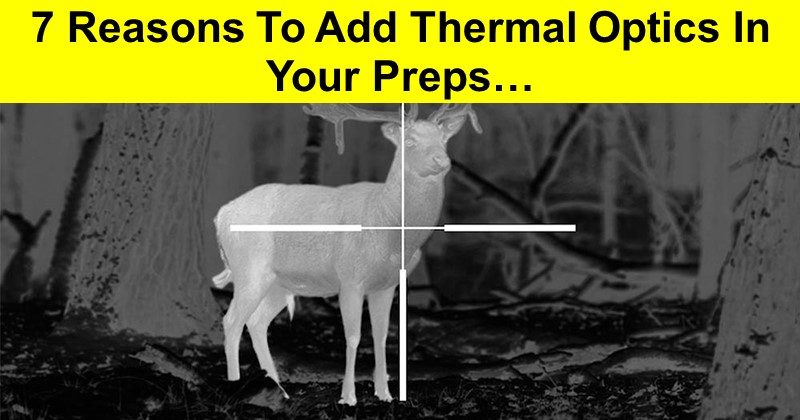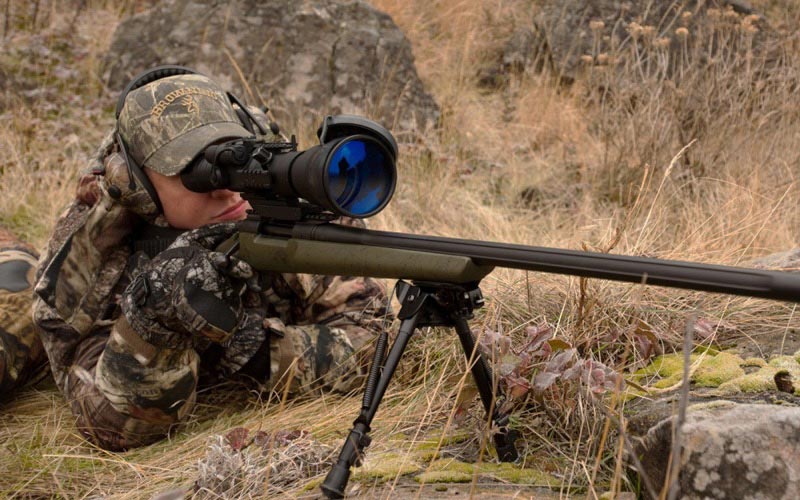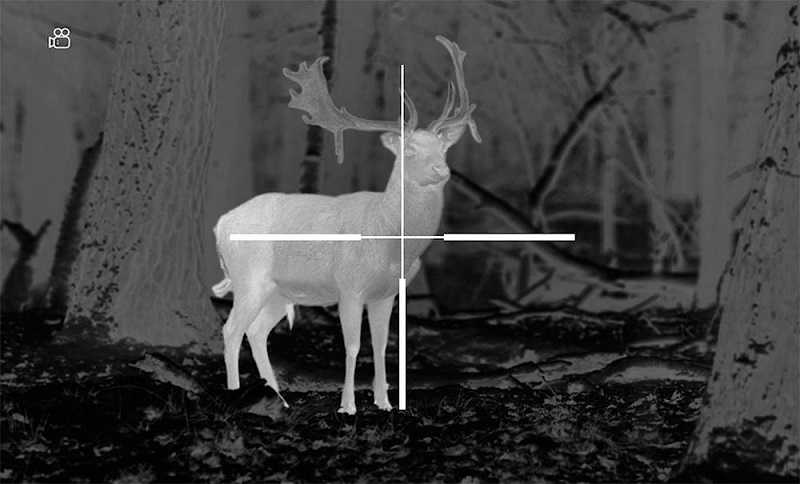
Are Thermal Imaging Scopes Useful?
Having seen the movie Predator with Arnold Schwarzenegger when I was young landed me with a fascination for thermal optics. That fascination is not what led me to start considering their use today. Not only as an aid to hunting but as an option for a variety of tasks that we, as preppers, may deem important.
Recently in Search and Rescue training, we used a thermal optic to scan for lost hikers. It was amazingly powerful and successful. Even through rather dense foliage, we were able to clearly make out any presence with body heat.

This is a very powerful utility and one that is now within the grasp of most people. Back in the 90s, even an affordable thermal optic could quickly exceed $10,000.00. I recall reading the ads for these units in several of the gun catalogs that arrived at our house and knew it was out of reach.
That has changed. Now you can get a high-quality thermal sight that is quite cost-effective. The entire industry of thermal optics went through some growing pains early on. This combined with their high cost has seen them mostly employed for hog hunting.
I think it’s well past time we take a hard look at thermal optics as the potential tool they could be.
A Brief Primer on Thermal Optics
To correct any possible misunderstanding, I think it’s important we spend a few brief words on what exactly a thermal optic is. It is not night vision and has a number of benefits over a standard night vision scope. I do believe night vision is a useful technology but not the equal of thermal optics.
Night vision relies on some form of illumination from an external source. That can be ambient light for some types or an IR illuminator for others. In order for something to show on night vision it has to reflect that illumination. It can not work in complete darkness and has a very limited range.
Thermal optics detect the radiation, in the form of body heat, that is emitted from a target. They can be used day or night and even in complete darkness. The range of thermal is often much farther and can easily exceed 1000 meters on some units.
All night vision is monochrome. Usually, you can pick out your target with night vision with little difficulty. But if your target is near other reflective surfaces, it will just blend in. This is especially true of very small animals.
There is no blending in with thermal. The rainbow hues will stand out and be instantly recognizable. Even the quickest scan will show you if anything is near. From my home, I can clearly watch rats run around my barn over 200 yards from my window.
I believe the versatility and power of a thermal optic make it a far better technology than night vision for many uses.
Why a Thermal Scope?
So far, I have referred to this technology as thermal optics. So, why would I write this article about thermal scopes specifically instead of monoculars, goggles, or any of the other devices? That comes down to choosing a tool that is capable of multiple tasks.
Firstly, this is because a scope can serve as a hunting tool where other forms of thermal optics cannot. But that is just scratching the surface.
I am sure that most readers have a weapon mounted light. When there is something to investigate near our homes, many of us will reach for that weapon with its light rather than just picking up a flashlight.
The weapon mounted light serves the same purposes of a flashlight but with defensive capability. A weapon mounted thermal optic serves the same purpose.
Because of the way that thermal works, using goggles or a monocular in conjunction with a weapon would be impossible. You would never be able to see your sights. A scope will do everything any other type of thermal will but has a weapon attached should you need it.
If you are not comfortable with carrying a gun, a scope can be detached, often with just a throw lever, and used as a monocular. A thermal scope is just the most useful format for this technology.
Thermal Optics for Hunting

I am sure most of us are aware of the use of thermal optics in hunting. While it is worth covering briefly, it should not be the focus of this article.
Most game animals cannot be hunted after dark in many states. In my home state, only hog and coyote can be hunted after sundown. This will make hunting uses more limited for some than others.
Where and when it is permissible, hunting at night with a thermal scope is highly effective. Coyote are overpopulated in many areas, mine seems especially prone. I hunted coyote with a spotlight for several years but that method pales in comparison to the effectiveness of a thermal scope.
A bright light will scatter coyote immediately, often faster than you can get a bead on one. Thermal gives them no warning until your fire your first shot. Occasionally, that moment of panic from a loud noise can even give you time to get off a second shot.
My experience with hogs is much more limited but from my understanding, it works much the same.
Though I would hesitate to call it hunting, most of the use I get from my thermal scope is with the local vermin that like to raid my farm. I get coons, coyote, rats, and opossums regularly as they come searching for food. They are all easy prey with a thermal optic.
The one downside I have found is that the snakes they like to prey on my chickens are invisible.
Thermal Optics for Home Security
This is the one place that I feel thermal is most neglected. I have a rather large property with trees and a number of sheds and outbuildings. There are no street lights and on a new moon, it is pitch black. Thanks to the drug epidemic, home invasions and theft are prominent and a very frightening reality.
When I have an indication that something may be on my property, I want to be able to scan quickly. Sure, you can do that with a light but you give away your location. If you happen to start in the wrong spot, any troublemakers are given at least some warning to hide. This is an imperfect solution.
Night vision is a little better. You avoid giving any warning and don’t give away your location. But as we talked about with hunting, targets may not stand out, especially if they are hiding. Night vision also has a smaller field of view and limited range. I think it’s a solid tool but not one that can do everything I want.
Thermal optics give no warning, do not give you away, and make target location and identification easy. I can see to the far end of my property about 400 yards away and make out deer, dogs, and even small animals.
Even if someone were hiding with just a head poking out, it would light up in vibrant hues. Seeing through vegetation is a breeze so a person would have to be completely out of sight for them not to show up. This is by far the quickest way to scan your property with the least chance of missing anything out of place.
I could explain most of this all day but you can not experience how easy spotting through a thermal optic is until you try it for yourself. This video shows a couple of different modes available on Thermal optics. It does not show the typical rainbow color scheme that most people are familiar with. For scanning, I prefer the rainbow mode but the white heat mode does work very well.
You could do all of this with any thermal optic. I choose a rifle scope over a spotting scope for several reasons. As I mentioned, I like having the option to attach it to a weapon. Additionally, thermal scopes often have superior run times and a greater range of magnification. This is a huge benefit, especially when trying to spot at a distance or to identify a smaller target.
The optic I have attaches with a throw lever and holds zero pretty well. Probably most of my use is ridding the farm of varmints using a .22 rifle. The remainder of the time it gets mounted on an AR-15 for larger targets. I rarely ever use it without it mounted on a gun but it could be used as just a spotter.
I would not trust it to hold a zero well enough for a 100-yard shot but most of my shots are 20 yards or less and I am within an inch or so. This is acceptable for any use I normally have. When I take it out to hunt, I do an actual zero on the rifle before I go.
The peace of mind this has brought for scanning my property has been well worth the cost!
Other Uses for Thermal Optics
As I mentioned above, I use a thermal optic for search and rescue. This is not a weapon mounted scope but a dedicated unit. I do not take a rifle with me on search and rescue. This application works well in the woods, water, and most any other environment and is the most important use I have for thermal.
I also use my thermal to keep track of my dogs after dark when they go out. It works much better than a flashlight and is good practice. But outside of the use on living things, a Thermal scope has a variety of uses. The more innovative you are, the more uses you are likely to find.
I use a thermal to check for hotspots on my wood burning chimney. This can help avoid fires and tell you when you may have a potential blockage in your chimney. While you are at it, you can use a good thermal to check your home insulation by looking for cold spots. Heating is expensive, why waste it?
I do a similar check on my HVAC system. You can easily see leaks and blockages in your system and avoid costly checks that involve taking your ductwork down. You don’t need a sensitive, purpose made unit to do this. Any thermal optic should work well enough to detect these issues.
You can check electrical problems in the same way. Check your breaker box to make sure none of your fuses are running hot before it becomes a problem. You can even check your household outlets and surge protectors to make sure they aren’t running hotter than they should be.
Hot water pipes can also be scanned to look for places that may benefit from more insulation. Check your windows to make sure you aren’t losing heat. There are a variety of uses thermal can be applied to for measuring heat loss. You should probably take it off your rifle first though.
This may somewhat piggyback off other uses but I also take my smaller thermal optic with me when camping. I like to be able to spot wildlife and watch the activities of nocturnal critters that you usually never see. You could even use it to search for Bigfoot or the Yeti if you were so inclined.
Conclusion
Hopefully, this does an adequate job of addressing some of the many uses of thermal technology. For those who seek to be truly prepared, a thermal optic is an amazing tool with so many applications in our world. For prepper types, so many of these uses are important to the way we conduct our daily lives.
The longer I have had my thermal optics, the more I have found I use them. Of course, you should match your thermal to your intended uses. That said, when it comes down to it a mountable rifle scope provides the most utility for me.
I can use it for security, safety, providing food, and even some leisure activities. They may not be a perfect technology but they are a very useful one.
BIO: Eric Patton from Scopesman
Eric grew up hunting, fishing, and roaming the hills of the Easter U.S. and has dedicated himself to becoming a well-rounded outdoorsman. Anytime there is an opportunity for a little fishing or a morning spent hunting, you will find him in the woods. In his off time, he teaches a variety of outdoor skills including land navigation and basic survival. Recently a Search and Rescue member, he has begun learning the ancient art of human tracking in a variety of terrains.
Leave a Reply